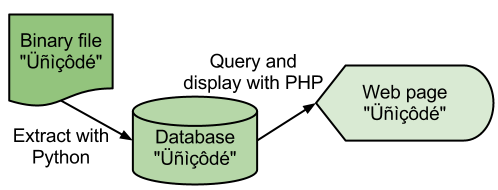A few months ago, I published a procedure for analyzing code coverage of the test suites exercised in FFmpeg and Libav. I used it to add some more tests and I have it on good authority that it has helped other developers fill in some gaps as well (beginning with students helping out with the projects as part of the Google Code-In program). Now I’m wondering about ways to do better.
Current Process
When adding a test that depends on a sample (like a demuxer or decoder test), it’s ideal to add a sample that’s A) small, and B) exercises as much of the codebase as possible. When I was studying code coverage statistics for the WC4-Xan video decoder, I noticed that the sample didn’t exercise one of the 2 possible frame types. So I scouted samples until I found one that covered both types, trimmed the sample down, and updated the coverage suite.
I started wondering about a method for finding the optimal test sample for a given piece of code, one that exercises every code path in a module. Okay, so that’s foolhardy in the vast majority of cases (although I was able to add one test spec that pushed a module’s code coverage from 0% all the way to 100% — but the module in question only had 2 exercisable lines). Still, given a large enough corpus of samples, how can I find the smallest set of samples that exercise the complete codebase?
This almost sounds like an NP-complete problem. But why should that stop me from trying to find a solution?
Science Project
Here’s the pitch:
- Instrument FFmpeg with code coverage support
- Download lots of media to exercise a particular module
- Run FFmpeg against each sample and log code coverage statistics
- Distill the resulting data in some meaningful way in order to obtain more optimal code coverage
That first step sounds harsh– downloading lots and lots of media. Fortunately, there is at least one multimedia format in the projects that tends to be extremely small: ANSI. These are files that are designed to display elaborate scrolling graphics using text mode. Further, the FATE sample currently deployed for this test (TRE_IOM5.ANS) only exercises a little less than 50% of the code in libavcodec/ansi.c. I believe this makes the ANSI video decoder a good candidate for this experiment.
Procedure
First, find a site that hosts a lot ANSI files. Hi, sixteencolors.net. This site has lots (on the order of 4000) artpacks, which are ZIP archives that contain multiple ANSI files (and sometimes some other files). I scraped a list of all the artpack names.
In an effort to be responsible, I randomized the list of artpacks and downloaded periodically and with limited bandwidth ('wget --limit-rate=20k').
Run ‘gcov’ on ansi.c in order to gather the full set of line numbers to be covered.
For each artpack, unpack the contents, run the instrumented FFmpeg on each file inside, run ‘gcov’ on ansi.c, and log statistics including the file’s size, the file’s location (artpack.zip:filename), and a comma-separated list of line numbers touched.
Definition of ‘Optimal’
The foregoing procedure worked and yielded useful, raw data. Now I have to figure out how to analyze it.
I think it’s most desirable to have the smallest files (in terms of bytes) that exercise the most lines of code. To that end, I sorted the results by filesize, ascending. A Python script initializes a set of all exercisable line numbers in ansi.c, then iterates through each each file’s stats line, adding the file to the list of candidate samples if its set of exercised lines can remove any line numbers from the overall set of lines. Ideally, that set of lines should devolve to an empty set.
I think a second possible approach is to find the single sample that exercises the most code and then proceed with the previously described method.
Initial Results
So far, I have analyzed 13324 samples from 357 different artpacks provided by sixteencolors.net. Continue reading →
